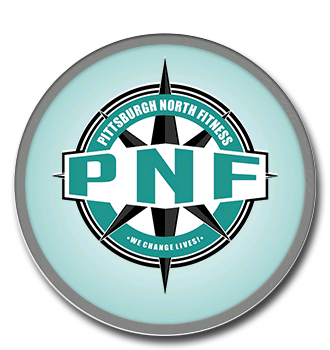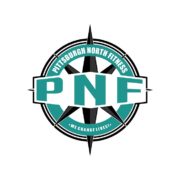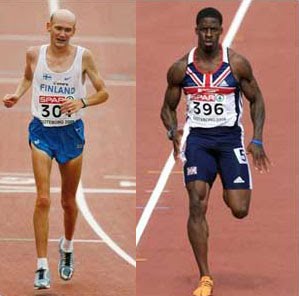How To Eat Healthy When Eating Out
You’ve finally gotten into a workout routine, you are eating well, and you are beginning to see some changes in your body. But, then friends ask you out to dinner. Obviously, you want to go. You haven’t seen them in awhile and it would be really nice to have an evening away from the kids. But, then you kind of freak out asking yourself; “What am I going to eat? I’ve worked really hard and don’t want to lose the progress and momentum that I’ve gained.”
Well, assuming that you won’t be eating at a fast-food joint or pizza parlor, here are some strategies for eating well and stay on track with your fitness goals when eating out.
#1. Meat & Veggies.
Skip the pasta and the cream sauces and order grilled fish, chicken, steak, or pork. Then for your sides, order steamed veggies and a salad with the dressing on the side.
#2. Pass on the Bread.
We’ve all had that time where we were so hungry that we eat all the bread and then aren’t hungry when our meal comes. So just tell the waiter to skip the bread basket altogether, or if your friends want bread have them leave just enough for them.
#3. Skip Dessert.
Okay if you’re at a restaurant that is world-renown for their desserts go a head and have it, but just count it as one of your weekly splurges. Otherwise skip these sugar-laden treats that usually end up leaving you disappointed, not feeling well, and full of regret for eating so many empty calories.
#4. Drink Slowly.
Tomorrow you will regret having drank so much wine, not just because of the extra calories, but also because of the pounding headache and two screaming kids you now have to deal with. Ordering a drink before dinner is fine and a great way to relax into the night. Having three at the bar while you wait for your table, another before dinner, and then hanging out after for one more bottle of wine is a recipe for disaster. Not only will you end up consuming more calories than you wanted too, but you also will again tomorrow as you binge on comfort foods because you don’t feel well. So drink slowly, drink some water between drinks, and enjoy the conversation.
#5. Enjoy the Conversation.
Put down your phone, stop logging what you are eating, and talk to the people you are having dinner with. Talking will force you to eat slower and get fuller sooner, resulting in eating less calories.
You don’t have to eat every meal at home, or sit in your cubicle eating home cooked food out of Tupperware for lunch to stay lean. Use the tips above and you will stay on track.
Learn more about our 30-Day Personal Training Experience here….
https://pittsburghnorthfitness.lpages.co/30-day-personal-training-experience/
Is Cardio Making You Fat?
Is Cardio Making You Fat? – By: Josh Proch, CSCS, Pn1
Is logging countless miles day after day really worth the effort? Is running a marathon the epitome of health and fitness? Does keeping your heart rate above 80% max produce the best results?
What if you where were told that the answer to all of those questions was “NO”?
Blasphemy right!
Now for the really hard news, what if cardio isn’t even good for you and is possibly doing your body more harm than good?
This is exactly what we are going to look at. While the media, your neighbor, your doctor, and some high profile celebrities tout the benefits of cardio; we are going to dig into the unspoken, ugly truth about cardio.
But first, an explanation of cardio is needed. According to Merriam-Webster’s dictionary, cardio is “any type of exercise that causes the heart to beat faster and harder for a period of time.”
“Faster and harder for a period of time”, this is where things have gotten a bit skewed. In our more is better American mindset we have pushed cardio past its beneficial limits. Technically, any activity that increases your heart rate is cardio whether it is for 10 seconds or 60 minutes. A quick sprint up the steps: cardio. Running to the bathroom: cardio.
So why do so many people have such a skewed belief about what cardio is and what is needed to get in shape and lose weight?
Well, the answer goes back to the 70’s with Jimmy Fixx’s release of the book “The Complete Book of Running”, which started a fitness revolution with many people hitting the pavement running. Fixx later died of a heart attack while running at the age of 52, full disclosure he did have a family history of heart disease related early death and was a former smoker.
Today we are still hit with the same message that more is better and if hard is good, harder is better. If you don’t believe this just turn on the TV or Google search “fitness trends”. You will be bombarded with fitness programs claiming how challenging they are, how many calories they burn per workout, or that they produce they fittest people on earth. We have even gone from the once popular 5K races, to races that range from three to ten miles and provide obstacles with electric shock while in water. We are a culture of extremes, which is why we have the skewed version on cardio in our minds.
So what is the truth about too much cardio?
The quality of your workout is more important than the duration.
It doesn’t matter how long you exercise, it is more important what you do in your workout. With cardio you need hours to burn significant calories, because there is no Afterburn Effect – the result of an elevated metabolism for 36-48 hours post-workout where your body is burning calories at an increased rate. With cardio this doesn’t happen, you burn the 500 calories in your workout and when you stop your metabolism goes back to it normal state. With other forms of exercise, such as strength training and interval training your body keeps burning calories for hours afterwards.
This was first seen all the way back in 1994 by Angelo Tremblay in his groundbreaking study the “Impact of exercise intensity on body fatness and skeletal muscle metabolism.” In this study he looked at the comparison of endurance training (cardio) versus interval training. What he found was that while the endurance group burned nearly twice the amount of calorie as the interval group, the interval group lost nine times more body fat.
Less work, less calories burned during the workout, and a leaner body? How is that possible?
Well, it goes back to the Afterburn Effect, which increases the amount of calories burn in those 36-48 hours after the workout. It also is due to two other factors. Your body’s energy system used and the Compensation Effect.
Your body has two different energy systems and they burn calories much differently. Aerobic exercise (cardio) burns calories through the use of oxygen in the body to create energy, while anaerobic exercise (interval training and strength training) uses stored muscle glycogen to create energy. This is a very important difference and results in anaerobic exercise burning calories at a ratio of 5 to 1 and even 7 to 1 in some research, over aerobic exercise (cardio).
*A side note, every calorie burn tracking device is programmed with the aerobic equation making them not very accurate with interval and strength training, but that is all that is currently available on the market outside of a high-tech university lab.
The Compensation Effect is much simpler. With long extended periods of cardio or really any type of exercise that goes past the 50 minute mark your body signals a hormonal response that makes you extremely hungry, especially for carbohydrates, and results in you eating more and storing fat for energy to get through your next workout.
Now for how too much cardio results in muscle wasting, slowly the metabolism, and can harm your cardiovascular health.
“But, wait! I’m doing cardio to improve my heart health and increase my metabolism. And what is muscle wasting?”, you say.
Let’s take each of these one at a time, starting with muscle wasting.
Muscle wasting happens when your body burns and loses its muscle tissue. This is typically why people lose weight when they do high amounts of cardio. They don’t actually lose body fat and in many cases they tend to increase their body fat percentage due to the loss on muscle tissue. This can be seen in the photos below of the athletes.
The athletes on the left are Olympic level long distance runners who spend hours each week doing cardio. And the athletes on the right are Olympic level short distance, explosive athletes who train primarily through strength training and short burst interval training.
Who looks better?
Not only do the athletes on the right look better, the ones on the left look older. This is because high amounts of cardio actually speeds up the body’s aging process, while strength and interval training that supports the body’s muscle tissue keeps you looking younger.
Ever hear of oxidation? That is what is happens when you do high amounts of cardio. Your body burns oxygen as its’ primary fuel in the body, this leads to oxidative stress, or the inability of your body to detoxify the reactive intermediates. When your body can no longer keep up with the detoxification, free radical damage begins to happen. This is why and how high amounts of cardio ages the body and can lead to injury and a weaken immune system. Additionally, all of this oxidative stress leads to excess cortisol in the body, which again to leads to muscle loss, fat storage, and a high incident of chronic disease.
“So how does cardio slow my metabolism?”
Think of your body as a car engine. If you have a high fuel economy you get good gas mileage, if not you don’t. Doing cardio is like driving a Toyota Prius on the highway. You’ll drive forever with out burning much gas. On the other hand you have strength and interval training, which is like driving V8 Hummer around town. It burns through gas like crazy and is not very efficient. This is good for burning calories and fat, you don’t want to be efficient.
And now for the harmful effects high amounts of cardio can have on your cardiovascular system.
This is the side that is very rarely spoken about cardio and can be hard for many cardio queens to even read, but the research is there to support it.
Research has shown that people who do more than 10 hours per week of cardio or extremely intense workouts day-in and day-out have been shown they could be causing damage to the heart through the right ventricle beginning to stiffen and result in trouble maintaining a regular heart beat. Research out of the Mayo Clinic has shown that doing this for ten plus years will actually irreparable damage the heart and shorten your life span.
In 2010 the Canadian Cardiovascular Congress in Montreal, found that extended cardio, such as running marathons, actually increases your cardiovascular risk by seven-fold.
It has also be shown that short-burst activities provide better health and fitness results because they mimic the lifestyle of our hunter-gather ancestors and our current day-to-day activities to some extent. Which lead us to:
“So how should I be working out?”
The American College of Sports Medicine recommends 150 minutes per week of exercise with a heart rate between 50 and 80 percent maximum for the best health benefits. This also seems to be the sweet spot for fat loss, with clients who do more not getting as good of results, or not any better results.
Those 150 minutes of exercise are best split up into three workouts over the course of the week, preferably with a day of rest in between.
To get the best results your workout should begin with some soft tissue work, like foam rolling, and then move into a dynamic warm-up that is focus on movement patterns.
Each workout should contain at least twenty to twenty-five minutes of pure strength work hitting every major movement pattern. How this is done doesn’t matter as much as just getting it done does.
The core should be trained to support and the spine, rather than flex it. This means planks and woodchops are preferred over crunches and sit-ups.
Heavy carries should be done in every workout. If you want to see your heart rate increase grab a pair of heavy kettlebells and go for a walk, your heart rate will increase fast.
Finish with three to five minutes of high-intensity interval training. This could be twenty seconds on, ten seconds off using the Battling Ropes or on a bike.
And finally, cool-down with some primitive movement animal flow drills for a few minutes to help your body begin the recovery process.
If you do all of that three times a week, every week, your body will change in ways you never imagined or saw with your old cardio workouts.
Looking for some help with your fitness? Learn more about our 30-Day Personal Training Experience at the link below…
https://pittsburghnorthfitness.lpages.co/30-day-trial-membership/








